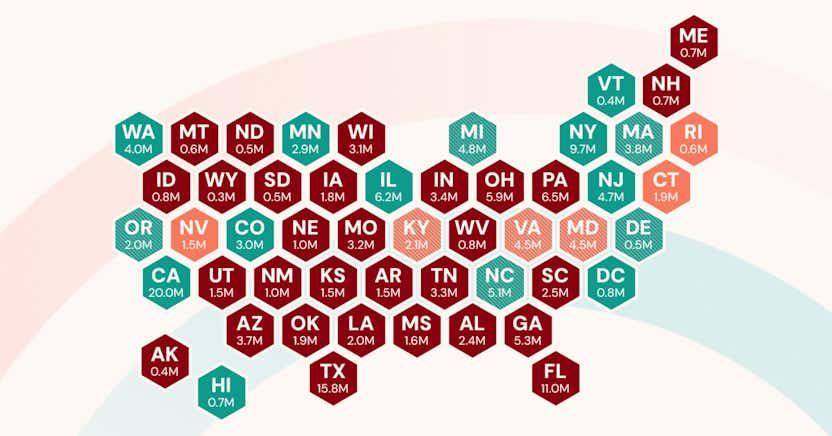Sweden — Pay equity analysis and reporting (lönekartläggning)

Local requirement
Sweden
In Sweden, all employers need to conduct an annual pay equity analysis, with several major requirements. This page gives an overview of those requirements and how PayEquity by beqom can help.
Pay equity analysis requirements in Sweden
To facilitate equality in the workplace, Sweden integrated pay equity analysis requirements into its Discrimination Act, implemented in 2009. The requirements are centered on an annual compensation mapping analysis, or lönekartläggning.
This analysis considers equal work (or substantially similar work) and work of equal value to see if gender affects employees’ pay.
All employers must conduct this analysis annually, but only employers with 10 or more employees need to document it. This documentation should be kept on file to be handed in to the DO (Diskriminerings ombudsmannen) upon request.
There are additional requirements for employers with 25 or more employees that have identified a pay gap. These organizations must also document the following:
- The measures they need to take in order to close the gap.
- When they plan to implement those measures (which must be within three years at most).
- The cost (monthly or yearly) of closing the gap.
- A reflection on the progress made and the steps they have taken in the last year.
Lönekartläggning support with PayEquity by beqom
PayEquity by beqom thoroughly equips users to create reports for lönekartläggning. Our compensation mapping feature can generate analyses that meet Sweden’s three main requirements:
- Analyzing equal work (or substantially similar work) to identify any compensation differences between genders.
- Analyzing equally valued work, comparing jobs that are predominantly female to other jobs (non-female predominant) of equal value and identifying any differences in compensation.
- Analyzing predominantly female jobs and comparing them to lower-valued jobs that are not predominantly female but receive higher compensation.
Using the Swedish preset, users can get the results for these analyses in just a few clicks. The system also makes it easy for users to fine-tune their analyses and document their findings. The compensation mapping feature offers the following:
- Comparison can be based on median or average compensation.
- By default, jobs where at least 60% of the employees are women are considered to be predominantly female. Users can easily modify the predominance of jobs and document the reasoning (e.g., historical representation).
- Results presented as graphs and tables, along with informative text that draws out the main results of each analysis.
- There is an option for notes to document any differences in pay and the reasons for them.
- The complete compensation mapping can be exported to MS Word and used as the basis for an easily tailored written report.
Two of Sweden’s required analyses start by determining which jobs are of equal or comparable value. Our job evaluation feature lets users establish the value of different jobs using objective criteria (like responsibility, effort, knowledge and skills). We offer both built-in job evaluation templates and a wizard that lets users create their own. PayEquity by beqom can also use pre-existing job evaluation frameworks created in MS Excel.
If an organization identifies any compensation differences between men and women doing equal work or work of equal value, PayEquity by beqom helps with the next steps.
- The software can analyze whether the difference can be explained by any factor other than gender. With regression analyses, users can generate a model of the compensation structure. This lets them see which variables contribute to the compensation difference and by how much.
- PayEquity by beqom makes it easy to drill down to different groups to obtain a better understanding of the pay structure.
- The platform can suggest raises to close or reduce pay gaps – while staying within a budget.
- Once the pay gap is closed, the Compensation Assistant helps make sure that it doesn’t creep back open as employees are promoted or hired.
PayEquity by beqom does more than just help perform lönekartläggning and prepare reports that will satisfy the DO. It helps companies know what their pay structure looks like at all times, so there will not be any surprises for next year’s analysis.
The platform also goes beyond equity in pay alone: with the workplace equity feature, users can visualize workforce diversity in hiring, termination and internal mobility. This tool helps identify other types of workplace inequity, like unequal access to opportunity.
Please note that while this local resource information has been compiled by beqom's legal and pay equity experts, it does not constitute legal advice.
More on local requirements and reporting
beqom's pay equity tools make complying with local requirements and regulations easier than ever before, allowing organizations to conduct pay equity analyses to identify any pay disparities.

Sweden — Pay equity analysis and reporting (lönekartläggning)
Every year, Sweden requires all employers to conduct a pay equity analysis (lönekartläggning) with a few key requirements. Find out more on our page.

State of California — Pay transparency and pay data reporting
In the US state of California, pay equity legislation is relatively progressive. It includes both a data reporting requirement and a pay transparency law. This article goes through the requirements for all aspects of the law and how PayEquity by beqom can help support employers.

Ireland — Gender pay gap reporting
This page provides information for organizations looking to understand and respond to Ireland’s Gender Pay Gap Information Act 2021.

France — Gender equality index
For companies operating in France, this article provides information on pay equity reporting and associated legal requirements.

Israel — Gender pay gap reporting
This resource article provides information about Israel’s gender pay gap reporting requirements and an overview of how to create and complete the reports.

Spain — Pay equity analysis and reporting
Pay equity laws in Spain ask all companies to keep a remuneration register, with additional analysis and reporting for slightly larger employers.

Local requirements - Pay equity analyses and reporting
Get an overview of some of the local pay equity requirements that many of our customers need to fulfill, and achieve effortless compliance today.

USA - Pay data reporting (EEO-1)
Although no gender pay gap reporting per se is required, some demographic data reporting is required in the US.

UK — Gender pay gap reporting
The United Kingdom (UK) requires gender pay gap reports from organizations of a certain size. This page outlines the UK requirements and how to get started.

Norway — Pay equity analysis and reporting
In Norway, employers with 50+ (sometimes 20+) workers must prepare annual and biannual pay equity reports. This page outlines the requirements.

Canada — Pay equity analysis and reporting
Companies operating in Canada should be prepared to comply with federal pay equity analysis and reporting laws. Some provincial regulations also exist. We give readers an overview of Canada’s detail-oriented requirements.
Recent blogs on Pay Equity

Humanizing Compensation: Why Pay Is More Than Just a Paycheck
Compensation is about more than just a paycheck. Discover why it's essential to humanize compensation to build trust and create a more engaged workforce.
Read more

A Condensed Version of The U.S. Pay Transparency Index 2025
The U.S. Pay Transparency Index analyzes more than 13,000 job listings in the U.S. to uncover the truth behind pay transparency laws, and reveals how many companies are following the law.
Read more

Unlocking the Power of Pay Transparency: How Global Organizations Like PUMA Are Leading the Change
See how global leaders like PUMA are turning pay transparency into a competitive advantage—and how your organization can too.
Read more
